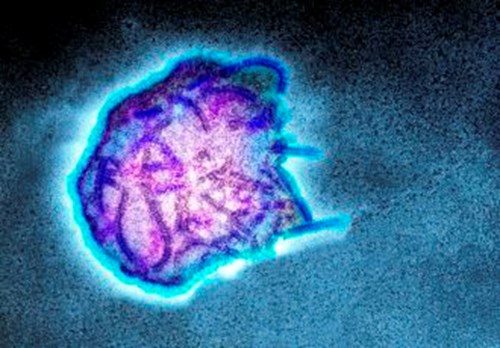Measles

The measles virus is highly contagious and infects millions of individuals worldwide, causing serious disease in over 10 million children and accounts for about 120,000 deaths each year1. Transmission is predominantly through contaminated aerosols. Infection can be prevented by the administration of measles vaccines either in a monovalent form or in a combination with mumps and rubella – the MMR vaccine. The MMR vaccine is safe and effective as about 97% immunity can be achieved in individuals by the administration of two doses of the vaccine. The vaccine was developed by the attenuation of wild-type Measles virus by in vitro passage in human and chicken cells2.
Despite global availability and use of this vaccine, measles remains an important cause of morbidity and mortality3. Outbreaks have been recently reported in Belgium, France, Germany and other European countries4. There have also been a number of reports in Africa and Asia. A record number of 667 measles cases were reported from the United States in 2014, 14 years after the disease was documented as eliminated from the country. The majority of people affected in these outbreaks had not been previously vaccinated2. This is a serious public health concern and is a major setback to the eradication of measles by 20206.
The scientific interest in Measles virus research is diverse. While some groups are involved with the development of better and more robust diagnostic assays7, others are focused on further understanding on the host adaptive immune response to measles infection with the aim of developing potent antivirals8. Novel vaccine strategies are also being investigated. One of such includes changing the route of delivery from subcutaneous injection to aerosolized forms or dry powders9.
Many of the attenuated strains used in measles vaccines are derived from the Edmonston strain isolated in 1954 and include the Moraten, the Schwartz and the Edmonston-Zagreb strains. These strains are available in the NCPV collection under the catalogue numbers 0007234v, 0809211v and 0809212v respectively.
Additional strains, including clinical isolates of measles virus are also available from our collection.
References
1. Muhlebach, M. D., Mateo, M., Sinn, P. L., Prufer, S., Uhlig, K. M., Leonard, V. H., Navaratnarajah, C. K., Frenzke, M., Wong, X. X., Sawatsky, B., Ramachandran, S., McCray, P. B., Jr., Cichutek, K., von Messling, V., Lopez, M., Cattaneo, R., 2011. Adherens junction protein nectin-4 is the epithelial receptor for measles virus. Nature 480, 530-533.
2. Centres for Disease Control and Prevention, 2018. Measles Cases and Outbreaks. Accessed: 4th April, 2018
3. Griffin, D. E., 2018. Measles Vaccine. Viral Immunol 31, 86-95.
4. Gallagher, G., 2017. Measles Outbreak in Romania grows to 3,800 cases, threatens region. Infectious Diseases in Children. 30(4):3
5. Holzmann, H., Hengel, H., Tenbusch, M., Doerr, H.W., 2016. Eradication of measles: remaining challenges. Med Microbiol Immunol 205, 201-208.
6. Dina, J., Creveuil, C., Gouarin, S., Viron, F., Hebert, A., Freymuth, F., Vabret, A., 2016. Performance Evaluation of the VIDAS((R)) Measles IgG Assay and Its Diagnostic Value for Measuring IgG Antibody Avidity in Measles Virus Infection. Viruses 8.
7. Jiang, Y., Qin, Y., Chen, M., 2016. Host-Pathogen Interactions in Measles Virus Replication and Anti-Viral Immunity. Viruses 8.
8. Coughlin, M.M., Beck, A.S., Bankamp, B., Rota, P.A., 2017. Perspective on Global Measles Epidemiology and Control and the Role of Novel Vaccination Strategies. Viruses 9.
9. World Health Organisation, 2018. Measles. Accessed: 4th of April, 2018.
Written by Okechukwu Onianwa
